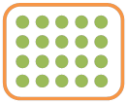Is your Warehouse Layout Up to Date? Receive an Updated Layout in 2 Weeks.
Why Understanding Capacity is Fundamental to Warehouse Design

By Charles Fallon
April 12, 2017 | 4 min read
Few concepts are more fundamental to warehouse design than understanding a facility’s capacity. But capacity is more than just a distribution center’s or warehouse’s size and storage space. There’s no simple warehouse capacity formula that’s a cinch to calculate. There are actually three key dimensions to consider: throughput, pick facings and storage. A facility reaches full capacity in each dimension independently – though limitations in one often affect the others.
We can define each dimension of capacity as follows:
The handling volume of the distribution center. How many orders, lines, cases and units can a warehouse or fulfillment center receive or ship over a given period of time. Typically, throughput capacity is determined by bottlenecks anywhere in the distribution process. These operational bottlenecks might be created by space and infrastructure limitations and first appear during peak receiving and/or shipping periods. Then, as volumes increase, they become chronic constraints.
The number of pick locations or slots that can be provided to support an operation’s active SKU base. The number of pick facings is limited by the material handling infrastructure that supports the pick line. A well-engineered pick line provides locations sized to the individual SKU’s requirements, balancing excessive travel during picking against frequent replenishments to keep the location stocked. When the number of active SKUs increases, the size of locations on the pick line must be reduced. As the size of locations gets smaller, replenishment tasks and picker congestion increase, leading to lower operating productivity.
The amount of physical inventory that can be stored within the warehouse. This is a function of the total number of storage locations and the size of these locations. It is important to distinguish between gross storage capacity and operating capacity. The gross capacity represents the capacity if every location were full – a theoretical capacity that cannot be achieved in reality. Operating capacity is the realistic capacity of the facility that accounts for operating and physical constraints.
Warehouse design should take into account these three dimensions to determine how to extend the capacity of an existing facility or increase that capacity through an expansion. For each dimension, there are process and inventory management strategies that can be deployed to boost capacity. Beyond that, facility re-engineering can yield increases to capacity before resorting to a facility expansion.
In any organization, different stakeholders will answer the question, “how full is the building?” differently. Buyers look for holes to plug with inventory and new listings. Warehouse managers look for space to execute efficient operations. Owners look to maximize their return on the distribution asset to which they committed through a lease or invested capital. The three dimensions of capacity described above give stakeholders a common approach to understanding warehouse capacity so they can strike the right balance among their often competing needs.
Reach out to the LIDD team to learn more about warehouse slotting and optimizing your warehouse operations.



